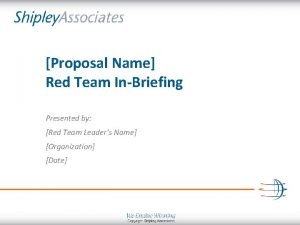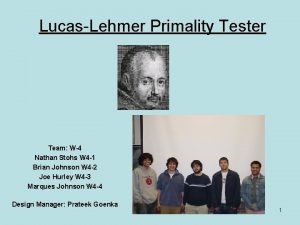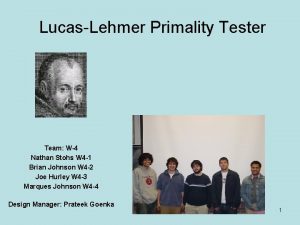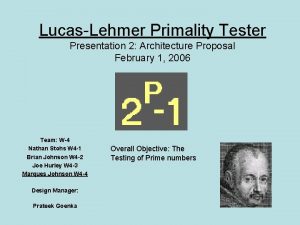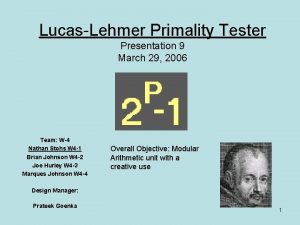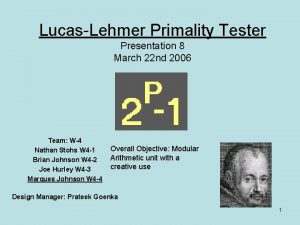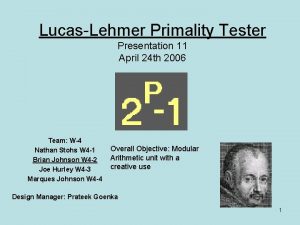LucasLehmer Primality Tester Presentation 1 Proposal Team Nathan







- Slides: 7

Lucas-Lehmer Primality Tester Presentation 1: Proposal Team: Nathan Stohs Joe Hurley Brian Johnson Marques Johnson

Applications, History • Lucas-Lehmer is a test used to search for Mersenne Primes. • Mersenne Primes are primes of the form 2^p – 1 • Given p, will conclusively determine primality after p-2 iterations of the algorithm. • Computationally heavy, but numbers tested independently, so easily distributable. • Difficultly lies in choosing an implementation www. mersenne. org

Applications, contd. • A hardware implementation of this algorithm is not going to save any lives. Why important then? • Mersenne primes (found with this test) are the largest prime numbers we know of today. • A pool of over 70, 000 computers currently run an implementation of this algorithm, with aggregate performance peaking at 14 Teraflops. • This is not intended to be a commercial product. www. mersenne. org/primenet/

Algorithm • Somewhat basic. • • Mp is Prime iff • Simple iterative structure, with p iterations • Includes modulo, squaring, arithmetic • Need for fast squaring

Design • Are we going to be able to beat a 4 GHz Pentium 4 implementing this algorithm in hand optimized assembly using FFTs for squaring? • No. • However, it would use much less power • Design is limited by the maximum value of p which we want to test, due to squaring. • Design scales quite nicely with max p

Flowchart Squaring operation will dominate the design in layout area Approx 10 k-15 k transistors Due to math constraints, will not require full blown divison Approx 4 k-5 k transistors Check for 0 residue on last iteration Arithmetic, registers, other controls Approx 3 k transistors

Problems • Will never be able to test untested numbers, at best an experiment for future work. • A lot will depend on how we implement the squaring, leading too. . • May be too easy! Backup plan is to use Fancy. Math™ to aid performance and make the project more “interesting”. • Other ideas considered: • Implementation of Blowfish Cipher


